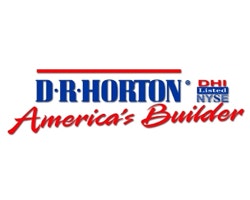One of the most sloth-like sectors in the American economy, the housing market has been depressed in every sense of the word. Home prices, new home construction, and existing home sales are seeing improvement, though increased rates of mortgage default and foreclosure still plague all companies that have an integral involvement in the industry. Perhaps the most apparent firms being affected are homebuilders like D.R. Horton Inc. (NYSE:DHI). Horton is the largest company of its kind in the United States, and its focus is on building single-family homes gave birth to its slogan: “America’s Builder.” There are significant reasons, however, that investors should stay away from DHI, and one of the most important can be seen by looking at the behavior of insiders within the company.
Insiders are investors who have a significant stake in a company, either through employment or individual investment. In DHI’s case, most are high-level board members and other officers within the firm’s corporate structure, and a large number are dumping their shares. In the last 6 months, there have been no ‘insider purchases’ of DHI, though there have been sales by officers like Stacey Dwyer, W. Michael Hewatt, S. Bradley Anderson, W. Bill Wheat, and J. Donald Tomnitz. Remarkably, these constitute almost half of DHI’s top brass, and one of the only names not involved is Donald R. Horton himself. Another thing to note is that Hewatt, a Director, has reduced his holdings of DHI entirely. While this could mean early retirement, it is worth noting that no such plans have been formally announced.
In order to analyze this situation further, we need to look at the company’s income statement. The very first thing to notice here is how drastically revenues were affected by the most recent recession. In 2007, they topped $11.29 billion, before shrinking to $3.66 billion just two years later. As expected, DHI experienced huge losses in this time period, the most serious of which occurred in 2008 when the company posted a net loss of over $2 billion. In the coming 5 years, DHI’s revenue is expected to grow at a compounded annual growth rate of -24.7 percent. When compared with the industry’s expected average 5-year revenue CAGR of -4.6 percent, a blatant red flag can be seen. Due to the fact that the entire industry is expected to shrink (in terms of revenues), this does not bode well for any homebuilder.
It is also worth analyzing measures like Price-to-Earnings and Forward Price-to-Earnings ratios to compare DHI with its major competitors. First, we can use the Swiss-army-knife of any good investor: the P/E ratio. DHI’s P/E is 40.2X, meaning that investors are willing to pay about $40 for every $1 of earnings from the company. Unfortunately, due to the fact that many of the companies in the sector have negative earnings, there are not enough viable comparisons to look at here. Thus, using the Forward P/E, which is based on future estimates of positive earnings, is a better measure. DHI’s Forward P/E is 18.3X, which we can compare to PulteGroup, Inc. (NYSE:PHM) at 16.1X, Lennar Corp. (NYSE:LEN) at 20.5X, NVR, Inc. (NYSE:NVR) at 15.0X, Ryland Group, Inc. (NYSE:RYL) at 15.9X, and Toll Brothers, Inc. (NYSE:TOL) at 33.2X. While Horton does not seem to be the most overvalued homebuilder in its industry, it is worth noting that it seems to be in the upper range of its peers. Additionally, the company’s Forward P/E is less than half of its current P/E, signifying two things: that either shares of DHI should decline in price over the future, or future increases in earnings will not be met with a proportional increase in stock price. Either of these outcomes is not ideal for investors looking to outperform the market, or even keep pace with it.
One statistic that is especially important in the homebuilding industry is inventory turnover. For companies like DHI, PHM, LEN and the others mentioned above, it is crucial to maintain a healthy turnaround when constructing homes. A slow inventory turnover means that the company is not efficient, and it is subjecting itself to various seasonal and economic risks that it might not face if it could construct homes in a quicker manner. When comparing DHI with its peers, we find some interesting results. DHI has an inventory turnover of 0.87, which we can compare to PHM at 0.78, LEN at 0.66, NVR at 4.47, RYL at 0.98, TOL at 0.36. So, Horton is not the most agile of the bunch and is not the worst; it decidedly seems middle of the pack.
Finally, we must look at the broader economic environment surrounding homebuilders. Here, we will find that it does not seem like a good play to invest in any industry that has such a close tie to the stagnant housing market. As mentioned above, DHI and its competitors are directly dependent on factors like new home construction and home prices to generate revenues. Since the housing market’s collapse in 2007, new home construction has shrunk to about 40 percent of pre-recession levels. In addition, home prices declined by 50 percent in some areas, and a recovery in value has been slow at best. All in all, a housing market recovery seems to be unlikely to occur until 2013 at the earliest, and this uninspiring economic background only adds more doubt to DHI. Considering the range of factors discussed here, it seems that these words do not have to be stated, but they will be said anyways: D.R. Horton Inc. (DHI) is a sell.


